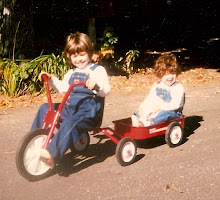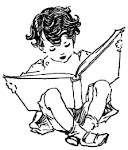It's Summer!
By Linda Glaser
Cut-paper Illustrations by Susan Swan
Book Summary:
In this story a child observes the coming of summer and its effects on the weather, animals, and plants. She spends many days outside watching the birds and insects, making little mud houses, and feeling the mud suck at her toes in “a squishy way.” She also goes to the beach and the pool to cool off in the water. At home, the girl waters the garden often so that the flowers and the vegetables will grow. She describes summer as bug season when the mosquitoes come out, when fireflies are caught in jars and then let go, when powerful thunderstorms can rock the skies, making loud crashing and booing sounds before the clouds clear and a rainbow appears. This book uses rhymes and three dimensional cut-paper illustrations to depict the what summer means to the author with the season’s moods, the season's natural beauties, and some of summer's activities. At the back of the book the author includes some ideas of what the reader can do during the summer months in a section entitled “Nature Activities to do when it’s Summer."
Lesson: Summer Postcards.
Grade: Kindergarten
Lesson Duration: 40 minutes.
Standards: Science & Writing:
Standard: K-4: The student will demonstrate an understanding of seasonal weather changes.
 Indicators: K-4.1: Identify weather changes that occur from day to day.
Indicators: K-4.1: Identify weather changes that occur from day to day.
K-4.2: Compare the weather patterns that occur from season to season.
Standard: K-4: The student will begin to create written work that has a clear focus, sufficient detail, coherent organization, effective use of voice, and correct use of the conventions of written Standard American English.
Indicator: K-4.6 Understand that a person’s name is a proper noun.
Standard: K-5: The student will begin to write for a variety of purposes and audiences.
Indicators: K-5.1: Use symbols (drawings, letters, and words) to create written communications (for example, notes, messages, and lists) to inform a specific audience.
K-5.3: Use symbols (drawings, letters, and words) to create descriptions of personal
experiences, people, places, or things.
Objectives:
-The student will write and design a summer postcard to a friend or family member, describing the climate of his/her destination, and the activities he/she has been doing.
 -With teacher scaffolding, the student will correctly address the postcard to his/her recipient (whether or not mailing address is correct or not), including, name, address, city, state, and zip code.
-With teacher scaffolding, the student will correctly address the postcard to his/her recipient (whether or not mailing address is correct or not), including, name, address, city, state, and zip code.
-With some teacher support, the student will choose appropriate activities for the place he/she will choose for his/her postcard.
-With teacher scaffolding, the student will format his/her postcard in the form of a letter, including a greeting with the recipient's name, body (2-3 sentences), and a closing with his/her name.
Materials:
-Example post cards.
Grade: Kindergarten
Lesson Duration: 40 minutes.
Standards: Science & Writing:
Standard: K-4: The student will demonstrate an understanding of seasonal weather changes.
 Indicators: K-4.1: Identify weather changes that occur from day to day.
Indicators: K-4.1: Identify weather changes that occur from day to day. K-4.2: Compare the weather patterns that occur from season to season.
Standard: K-4: The student will begin to create written work that has a clear focus, sufficient detail, coherent organization, effective use of voice, and correct use of the conventions of written Standard American English.
Indicator: K-4.6 Understand that a person’s name is a proper noun.
Standard: K-5: The student will begin to write for a variety of purposes and audiences.
Indicators: K-5.1: Use symbols (drawings, letters, and words) to create written communications (for example, notes, messages, and lists) to inform a specific audience.
K-5.3: Use symbols (drawings, letters, and words) to create descriptions of personal
experiences, people, places, or things.
Objectives:
-The student will write and design a summer postcard to a friend or family member, describing the climate of his/her destination, and the activities he/she has been doing.
 -With teacher scaffolding, the student will correctly address the postcard to his/her recipient (whether or not mailing address is correct or not), including, name, address, city, state, and zip code.
-With teacher scaffolding, the student will correctly address the postcard to his/her recipient (whether or not mailing address is correct or not), including, name, address, city, state, and zip code.-With some teacher support, the student will choose appropriate activities for the place he/she will choose for his/her postcard.
-With teacher scaffolding, the student will format his/her postcard in the form of a letter, including a greeting with the recipient's name, body (2-3 sentences), and a closing with his/her name.
Materials:
-Example post cards.
-Books with pictures from around the US and from around the world.
-Post card templates.
 -Crayons.
-Crayons.
-Markers.
-Pencils.
-A white board.
-Dry erase pen.
-Flip chart.
-Post card templates.
 -Crayons.
-Crayons.-Markers.
-Pencils.
-A white board.
-Dry erase pen.
-Flip chart.
-Sharpie.
Introduction:
Introduction:
1. Seated with the class in a circle on the carpet, the teacher will ask the student to close their eyes and think about summer. The teacher will ask the student to think about summer with his/her 5 senses:The teacher will ask them to think about what they do in the summer (camp, sports, go to the beach, vacation, etc.). The teacher will ask the student to think about summer using the way summer/summer air feels (hot, cold, windy, damp, stuffy, etc.), what do they see?, how does summer smell to him/her (the beach, grass, flowers, barbecue, etc.)?, how does it taste (watermelon, lemonade, ice cream, etc.)?,what does he/she hear?
3. The teacher will write some ideas on a flip chart that has been divided into 5 columns, one for each sense.
4. The teacher will introduce the story, It's Summer!, and before reading it ask the student to pay close attention to how summer is described using the 5 senses and what summer activities are described.
4. The teacher will introduce the story, It's Summer!, and before reading it ask the student to pay close attention to how summer is described using the 5 senses and what summer activities are described.
5. The teacher will read the story, It's Summer!, aloud to the class.
6. After reading the story, the teacher will ask the student to add to his/her list on the flip chart of things they do, see, hear, feel, taste, and smell in the summer.
7. The teacher will ask the student if he/she goes on vacation to do some of the activities that are listed.
8. The teacher will hold up a postcard and ask the student if he/she has ever written one to a friend or family member when he/she was on vacation. The teacher will call on several students to answer.
Procedure:
1. As the student returns to his/her desk, the teacher will write the following on the white board:
Left Side:
Dear _________,
I am on vacation right now in/at __________. I am having fun. Yesterday I ___________
(activity). The weather here is _____________. I wish you were on vacation with me. I will tell
you more about it when I get home.
Love,
______________(student's name)
Right Side:
Miss Sally Sample
3 Example Lane
2. The teacher will pass out several postcards to each group to look at as examples.
3. The teacher will explain that the student will be making his/her own postcard today. The teacher will hold up the over-sized postcard template that the student will be using and explain what she has written on the board. The teacher will tell the students to copy what is written on the left side of the board onto the left side of the postcard, and to fill in the blanks how they would like in order to personalize it.

4. The teacher will go over the information that should be written in each blank and read the message several times. The teacher will also explain the information that goes on the right side of the postcard. The teacher will tell the student that if they know an address he/she can use that one or they can make one up, since the postcards are just for fun and will not actually be mailed.
5. The teacher will encourage the students to use any of the words that he/she/the class has written on the flip chart and to think about the activities in the story.
6. The teacher will tell the students that he/she will get to design his/her own stamp on the postcard.
7. The teacher will flip the postcard over and ask the student what goes on the other side of the postcard. The teacher will explain that the student will be drawing a picture on that side of the postcard of the place where he/she is on vacation on that side of the postcard.
7. The teacher will flip the postcard over and ask the student what goes on the other side of the postcard. The teacher will explain that the student will be drawing a picture on that side of the postcard of the place where he/she is on vacation on that side of the postcard.
8. The teacher will hand out crayons and markers to each table of students and 2 books per table of books filled with photographs from around the world, that she borrowed from the library. The teacher will explain that the student can look through the book and choose a place they would like to visit if he/she would like. The teacher will show the students where the name of that place is listed in regard to each photo.
10. The students will begin the activity and the teacher will walk around and provide scaffolding to those who need it.
12. The teacher would then hang the postcards up in the classroom along with a map that has stickers marking all of the places, both nationally and internationally that the students in the class would like to visit on vacation. Next to each sticker the teacher would write the student's name.



























No comments:
Post a Comment